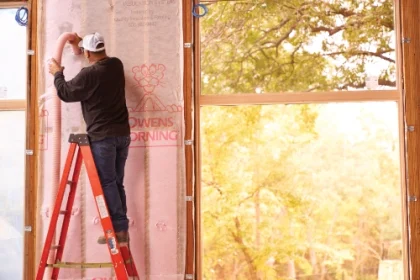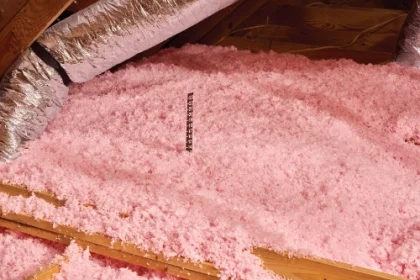

OVERVIEW
Blown-in insulation provides a dense, effective barrier against heat loss. It offers a low impact on the environment while providing immediate energy savings when installed in attics, walls and hard-to-reach spaces. Unlike other insulations systems that can leave voids and gaps, blown-in insulation provides a better seal by filling the space completely which provides a thermally efficient solution. Studies have shown that loose-fill insulation performs up to 22% better than batts of the same R value. Contact us to learn more.
BENEFITS OF BLOWN-IN INSULATION
Blown insulation, also known as loose-fill insulation, is usually made of cellulose, fiberglass, or rock wool and is blown into place in the form of loose fibers. This type of insulation is ideal for wall cavities, attic floors, irregularly shaped areas, and for filling in around obstructions. Described below are a few pros and cons of blown insulation.
- Quick to Install
- Easily Applied in Hard-to-Reach Areas
- Lowers Noise Levels
- Resistent to Pests
PRODUCT HIGHLIGHT:
Owens Corning® PROPINK® L77 Fiberglas™ Insulation
When choosing the right blow-in fiberglass insulation for your retrofit or new construction project, look no further than Owens Corning PROPINK® L77 PINK® Fiberglas™ Loosefill Insulation. A non-corrosive and non-combustible product, PROPINK resists moisture buildup and mold growth, reduces unwanted noise, does not require wet adhesives and does not settle, rot or deteriorate with age. PROPINK L77 is the industry leader when it comes to coverage, performance and energy efficiency. It’s a safe, sustainable choice for insulating attics, ceilings, walls and floors.
Added Peace of Mind
As Omaha’s Owens Corning® Certified Energy Expert® professional, we offer our customer additional assurance for their fiberglass blown-in insulation project. That’s because we are backed by an exclusive limited lifetime warranty on the #1 most trusted insulation brand* and an exclusive lifetime workmanship warranty on installation.† There’s no other warranty in the industry like it!
COMMON QUESTIONS
What are the differences between the blown-in insulation materials?
There are three basic types of blown insulation commonly used. Fiberglass insulation consists of small particles of spun glass fibers. Mineral wool is made from particles of rock or steel slag. Cellulose insulation comes from recycled newspapers or cardboard which has been treated with chemicals to make it resistant to flame and insects.
The best way to determine which option is right for you is to review your project – In some cases more than one material may be used in different parts of your project.
Do I have to remove the old insulation before adding blown-in insulation?
While it isn’t typically required to remove the old insulation this will allow you to check the ductwork, wiring, etc. You can also spray foam around all openings and holes in wall top plates to better seal your home. The best approach is to have the existing insulation inspected for mold, insects, rodents etc… prior to adding additional materials on top.
Will blown-in insulation settle?
Blown-in Insulation will settle a small amount overtime. The amount of settling is dependent on the materials used. Because settling is a known attribute of blown-in insulation we will calculate the appropriate levels to meet your R-Value requirements.
How long will the blown-in insulation last?
Most blown-in insulation can provide benefit indefinitely. There are many situations that cause insulation to degrade especially moisture. It is important to have your home or business regularly evaluated by an insulation expert to maximize your heating and cooling bills
*Source: Home Innovation Research Labs Builder Panel, April 2019.
†See actual warranty for complete details, limitations and requirements. For the lifetime of the Home beginning from date of installation by an Owens Corning® Certified Energy Expert®.
